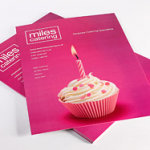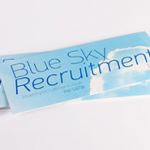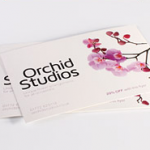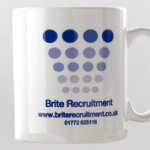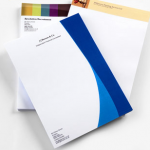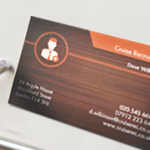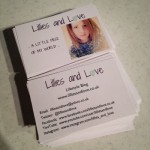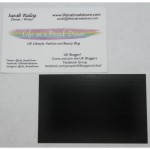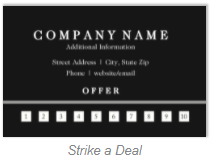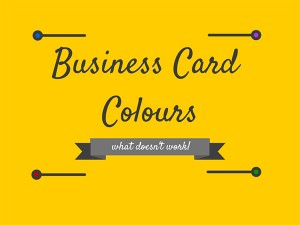If you’re a small business owner, you’ll know that it can be pretty tricky to turn customers into repeat customers – that is, to convince someone who’s bought your product or service to shop with you again.
There’s so much information out there on bringing in new customers and spreading brand awareness to your target market, but actually keeping customers is a different story altogether. When someone already knows of your brand, how do you keep their interest and prevent them from trying out a competitor?
In this article, we’ll discuss how to get repeat customers and share 7 easy and effective ways of improving your customer retention.
Why is Customer Retention so Important?
There are a slew of statistics related to the above question, but two facts aptly sum it up:
1) It’s cheaper for a business to keep a customer than it is to find a new one.
2) 80% of future profits will come from just 20% of past customers.
This means that over time, repeat customers bring more profit to your company than new ones. The decision about how much effort and money to invest in customer retention depends primarily on how established your business is, and your current sales volume.
If it’s a new business, then dedicate most of the marketing towards acquiring new customers. But even at this stage, you shouldn’t forget about customer retention! Don’t get to a point where new business has dried up, and you suddenly remember your past customers. You should apply customer retention policies throughout the life of your business.
How Do I Get Repeat Customers?
The answer to this question should be crystal clear: provide your customers with excellent and memorable products and services.
That may seem obvious, but if you don’t do the above correctly, you’ll never convince your past customers and clients to try your products and services again. They may, instead, be tempted to try out one of your direct competitors – whether out of curiosity, or because they can find a better price. Obviously, this isn’t what you want.
So, the most important rule to remember is to provide the best product and services that you can, and for as good a price as possible. Do not be tempted to prioritise savings and profits over quality. Get this right from the start and you stand a good chance to gain repeat customers.
Customer Retention Tips and Ideas
There are many great ideas for how to get repeat customers. Some, of course, will depend on the business type. For instance, if your business is a restaurant, offering early bird discounts to a customer will encourage them to visit again.
1. Loyalty Cards
Loyalty cards are a great way to encourage customers to buy again. For a coffee shop, try a simple business style loyalty card where the customer gets a free cup of coffee or complimentary pastry after buying six cups of coffee—simply stamp the card after every purchase. If the customer buys a coffee every morning, on the way to work, they’ll remember your shop.
Loyalty cards are suited to many types of retail businesses, including restaurants and general stores. As your business goes, you could even invest in digitally linked loyalty cards that reward the customer with redeemable loyalty points after each purchase. The sign-up process for such cards can also be an excellent marketing opportunity. Get your customer’s email address and use that to remind them of their point balance!
2. Provide Excellent Customer Service
Whatever your business is, you should always endeavour to make the customer service experience memorable. Not every sale will go smoothly. There are always things that can go wrong and your customer services should positively deal with these issues. Even if your company provides the very best product, a poor experience in returning a faulty item could make a customer drop your brand and choose another supplier.
Always respond quickly to your customer’s requests or questions. If they ask for a quotation, get it to them as quickly as possible. Don’t forget that your customer is likely to have asked your competitors for the same quotation. Respond quickly, with an attractive offer, and grab their business. Customers remember this kind of quick and efficient service. Perhaps next time, they’ll come to your business first.
3. Include Flyers offering Freebies and Discounts
This is a smart idea to ensure that customers who’ve shopped with you will have an incentive to buy again. When you ship (or hand the customer) their purchase, include in the package a customised flyer or postcard offering a discount or free gift with their next purchase. For example:
1) Free shipping
2) 10% off
3) Buy one, get one free
4) A free sample of a new product
5) A free gift with the next purchase, such as a personalised mug printed with your business logo (this also helps to keep your company in the forefront of their minds!)
For online purchases, provide a unique code that your customers can use when they check out. For in-store use, the customer will simply have to bring the flyer or postcard with them to show the staff at the till. You can also send promotional offers to previous customers via email, if you have their address.
4. Match the Competition
Customers often flip-flop between different suppliers, depending on who has the best offers or product line. So, to avoid this, it’s crucial that you keep a check on what your competitors are up to. Familiarise yourself with the products, services, and (above all) prices that your competition is offering, especially businesses with the same target market and operating in your region.
Encourage your past customers to come back to you by offering the same, or better, than your competitors. One great way of doing this is to advertise a “price match” service. If a potential customer comes to you with a cheaper quote from a different company, you’ll offer them the same price, or better.
5. Show Appreciation
These days, it’s easy to connect to customers via social media—but, sometimes, this misses the personal touch. It can seem empty and hollow, and people will be likely to scroll straight past your advert.
If you have your customer’s details, a much more effective way of showing your appreciation is to send them a thank-you on a compliment slip after they make a purchase. If your business is small enough or you have the resources, hand-writing the slip will make a world of difference and help your business seem more human. You can include this slip with their order, or send it to them a few weeks later, to remind them of your company and encourage them to shop with you again.
6. Offer Rewards for Referrals and Reviews
Repeat customers who are loyal to your brand are likely to be powerful brand ambassadors, promoting your business to their friends or associates. Take advantage of this by rewarding them for referrals. If your customer has a business with their own website, offer them a referral link that gives them a small finder’s fee, or product discount, for every referral link from their website.
Another powerful tactic is to ask a customer to complete a survey, either written or online. This works especially well with retail businesses, such as restaurants. As a reward for completing the survey, offer a discount or a free bottle of wine with their next meal. Not only do you get invaluable feedback, but the customer may also return to the restaurant and use the voucher. It’s a win-win situation.
7. Create Special Offers Tailored to the Customer
What makes special offers more effective and more likely to be taken advantage of? Tailoring them to each specific customer, rather than sending out a generic offer that some people may not be interested in.
For example, if you run a hotel and you noticed the customer paid for a round of golf in the hotel’s resort, send them a special offer for a free round of golf before the next holiday season. If the customer ordered a spa treatment, include a free couples massage. It’s this type of thoughtful offer that people remember.
For businesses that sell physical products, keep a record of your customer’s purchases and make special offers at an appropriate time. For instance, if your customer purchased a toner cartridge for their laser printer, send them a discount voucher after a couple of months. They’ll likely remember when the cartridge runs out and use your voucher to buy another.
Where Can I Order Great Quality Promotional Materials?
If you’re looking for professionally printed, high-quality business materials and promotional products, look no further than 123Print. We offer an amazing range of business stationery and products that can help your company retain customers, including (but not limited to):
1) Loyalty cards
2) Business cards
3) Flyers
4) Postcards
5) Vinyl magnets
6) Compliment slips
7) Promotional mugs
Everything is completely customisable, with the ability to add your logo and customise the colour scheme to your preferences. Before we print your order, we’ll show you a preview of what your product will look like.
We offer exceptionally fast shipping and a 100% satisfaction promise, meaning you’re guaranteed to be satisfied with the quality of our products. Try 123Print today for all of your business

